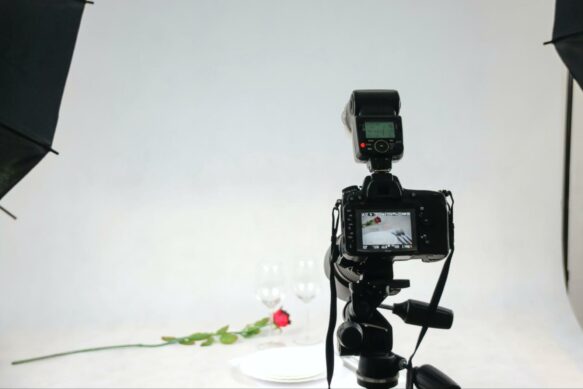How to Take Professional Amazon Product Photography: A Comprehensive Guide
High-quality product images can make or break your success on Amazon. When customers can’t see or touch the product in person, the images they see on your Amazon listing become their primary source of information. Professional Amazon product photography is not just about showcasing your items; it’s about creating a visual story that compels potential buyers to click “Add to Cart.”
This comprehensive guide will walk you through the essentials of Amazon product photography, from understanding its importance to mastering the techniques that will make your products shine.
The Importance of High-Quality Amazon Product Photography
Before getting into the technicalities, it’s crucial to understand why investing in professional Amazon product photography is non-negotiable for success on the platform.

1. First Impressions Matter
Studies show that 90% of online buyers consider photo quality as the most important factor in an online sale. High-quality Amazon product photography serves as a visual representation of your product, significantly influencing a customer’s decision to explore further or move on to another listing.
2. Enhancing Conversion Rates
Investing in high-quality Amazon product photography can lead to improved conversion rates. When customers can clearly see product details such as color, dimensions, and material, they feel more confident in their purchase decision.
3. Standing Out in a Crowded Marketplace
With numerous sellers competing for attention on Amazon, eye-catching and informative photos are crucial to standing out from the crowd. Professional Amazon product photography not only attracts more views but also engages potential customers, increasing the likelihood of conversion.
High-quality product photos play a significant role in driving sales on Amazon. Amazon’s algorithm favors listings with superior visuals, resulting in greater visibility and exposure. When your product images are of exceptional quality, they are more likely to appear in the top search results, catching the attention of potential buyers.
Essential Equipment for Amazon Product Photography
When it comes to professional product photography, having the right equipment can make all the difference in capturing impeccable images that showcase your products in the best possible light. Here’s a breakdown of the essential gear for Amazon product photography:
1. Choosing the Right Camera
When choosing a camera, it’s important to research and select one that aligns with your specific product photography needs. Investing in a professional-grade camera is essential for capturing the fine details of your products. DSLR or mirrorless cameras are popular choices due to their flexibility in adjusting settings and capturing high-resolution images.
2. Importance of Lighting Equipment
Proper lighting is perhaps the most critical aspect of Amazon product photography. Options include:
- Continuous Lighting: Provides constant light, making it easier to see how light interacts with your product in real-time.
- Strobe Lighting: Offers greater control and is ideal for freezing motion and capturing crisp images.
- Softboxes and Ring Lights: Softboxes diffuse light to create softer, more even lighting, while ring lights are excellent for evenly illuminating small products.
3. Using Tripods for Stability
A sturdy tripod is essential for maintaining camera stability, especially when using slower shutter speeds or shooting in low light. Look for tripods with adjustable height, quick-release plates, and sufficient weight capacity to support your camera and lens.
4. Lenses
The choice of lens is crucial for capturing sharp and detailed product images. A 50mm prime lens is perfect for balanced product shots without distortion. An 85 mm prime lens is ideal for close-ups, creating a beautiful background blur. A macro lens is essential for capturing fine details when photographing small, intricate products.
5. Backdrops and Surface Materials
A white seamless paper backdrop is a staple in product photography, drawing attention to the product without distractions. For more creative setups, fabric or gradient backdrops can add depth and interest.
Setting Up Your Amazon Product Photography Studio
Creating a dedicated space for your Amazon product photography is crucial for consistent, high-quality results. Here’s how to set up your studio:
1. Selecting the Perfect Background
The background of your product photos sets the stage for your product’s visual narrative. Opt for clean, neutral backgrounds that don’t distract from the main subject. White and light gray backdrops are popular choices for e-commerce product photography.
A white background creates a clean and minimalist look, perfect for showcasing the details of your product. On the other hand, a light gray backdrop can add a touch of sophistication and elegance to your images.
Another option to consider is using textured backgrounds. Adding a subtle texture to your background, such as a wooden surface or a fabric backdrop, creates a more visually interesting and dynamic composition. This can be particularly effective for products that have a natural or rustic aesthetic.
2. Arranging Proper Lighting
Once you have chosen your background, it’s time to arrange your lighting setup. Position your lights at appropriate angles to eliminate shadows, and experiment with different light intensities to highlight specific product features. Taking the time to perfect your lighting setup will result in captivating product images.
When it comes to lighting your product, there are several techniques you can employ to achieve the desired effect. One popular method is using a three-point lighting setup, which consists of a key light, a fill light, and a backlight. The key light is the main source of illumination and should be positioned to highlight the product’s key features. The fill light helps to soften shadows and provide overall illumination, while the backlight adds depth and separation from the background.
Additionally, you can experiment with different types of lighting, such as natural light or artificial studio lights. Natural light can create a soft and natural look, especially when diffused through a window or a lightbox. On the other hand, studio lights offer more control over the intensity and direction of light, allowing you to create dramatic and impactful images.
3. Positioning Your Product
How you position your product in the frame can greatly impact the overall visual appeal. Consider the product’s shape, size, and unique selling points. Experiment with different angles and compositions to find the most visually striking presentation for your product.
When positioning your product, it is important to showcase its best features and highlight its functionality.
For example, if you are photographing a piece of jewelry, you may want to capture the intricate details by shooting from a close-up angle. On the other hand, if you are photographing a larger product, such as a piece of furniture, you may want to show it in a room setting to give potential customers a sense of scale and context.
Don’t be afraid to get creative with your product positioning. Consider using props or incorporating lifestyle elements that complement your product. This can help create a story around your product and make it more relatable to your target audience.
Mastering Amazon Product Photography Techniques

1. Mastering the Rule of Thirds
The Rule of Thirds is an essential composition principle in photography. Instead of placing your subject in the center of the frame, imagine a grid of vertical and horizontal lines dividing the frame into thirds. Positioning your subject along these lines or at their intersections creates a more visually dynamic and engaging image.
When applying the Rule of Thirds, consider the balance and visual flow of your composition. Placing your subject slightly off-center can create a sense of movement and lead the viewer’s eye through the frame. This technique is particularly effective when photographing products with multiple elements, as it allows you to highlight each component individually while maintaining a cohesive overall image.
2. Experimenting with Angles
Don’t be afraid to explore different angles when photographing your product. Experiment with low-angle shots to convey power and dominance; capturing your product from below can make it appear larger and more imposing. On the other hand, playing with higher angles can showcase intricate details and offer a unique perspective.
Consider the context in which your product will be used and try to capture images that mimic that environment. For example, if you’re selling a camping tent, photographing it from a low angle with a scenic landscape in the background can evoke a sense of adventure and encourage potential customers to envision themselves in that setting.
3. Focusing on Details
In product photography, details matter. Zoom in on key features that set your product apart from the competition. Highlight textures, patterns, and intricate designs to provide a more comprehensive view of your product’s quality and craftsmanship.
When photographing small objects, such as jewelry or electronics, using a macro lens can help you capture even the tiniest details. This allows potential customers to examine the product closely and gain a better understanding of its unique selling points.
Remember to pay attention to lighting when capturing details. Proper lighting can enhance textures and bring out the finer elements of your product, creating a more visually appealing image.
With these tips and techniques, you now have a strong foundation to take professional product photos for your Amazon listings. Remember, investing in high-quality images is an investment in your brand’s success. Your product photography should reflect your dedication to excellence and offer customers a visually enticing experience that pushes them to click that “Add to Cart” button.
By implementing the Rule of Thirds, experimenting with angles, and focusing on details, you can elevate your product photography to the next level. Take the time to plan your shots, consider the story you want to tell, and let your creativity shine through. With practice and patience, you’ll be able to capture stunning product photos that not only showcase your products but also capture the attention and interest of potential customers.
Amazon’s Specific Guidelines for Product Images
To ensure your Amazon product photography meets the platform’s requirements, keep these guidelines in mind:
- Image Quality and Resolution: Images must be clear, in focus, and at least 1000 pixels on the longest side, with an optimal size of 1600 pixels or larger.
- Main Image Requirements: The main product image must have a pure white background (RGB 255, 255, 255) and show only the product being sold, without additional text, logos, or props.
- Additional Images: Use all available image slots to provide a comprehensive view of your product, including lifestyle and contextual images.
- Technical Specifications: Use the correct file formats (JPEG, TIFF, PNG, or GIF) and adhere to Amazon’s file naming conventions.
Conclusion
Professional-quality photography is just one of the many elements you’ll need to set your business up for success when selling on e-commerce sites like Amazon. There’s a lot to keep track of when it comes to online selling. If you’re overwhelmed, unsure of where to start, or simply wish to spend your time fine-tuning other aspects of your business, Amazon marketing partners like Adverio are here to help.
Frequently Asked Questions (FAQs) – Amazon Product Photography
1. Why is high-quality product photography important on Amazon?
Compelling visuals are crucial for grabbing attention, showcasing features, and driving conversions on Amazon.
2. What are the key elements of effective Amazon product photography?
Focus on clear, well-lit images with multiple angles and lifestyle shots to highlight your product.
3. How can I create professional-looking Amazon product photos without a studio?
Leverage natural lighting, simple backgrounds, and editing tools to enhance your product imagery.
4. What are the Amazon image guidelines I need to follow?
Adhere to size, resolution, and file type requirements to ensure your photos are compliant.
5. How can product photography boost my Amazon sales?
High-quality visuals increase click-through rates, conversions, and customer trust, leading to more sales.





























